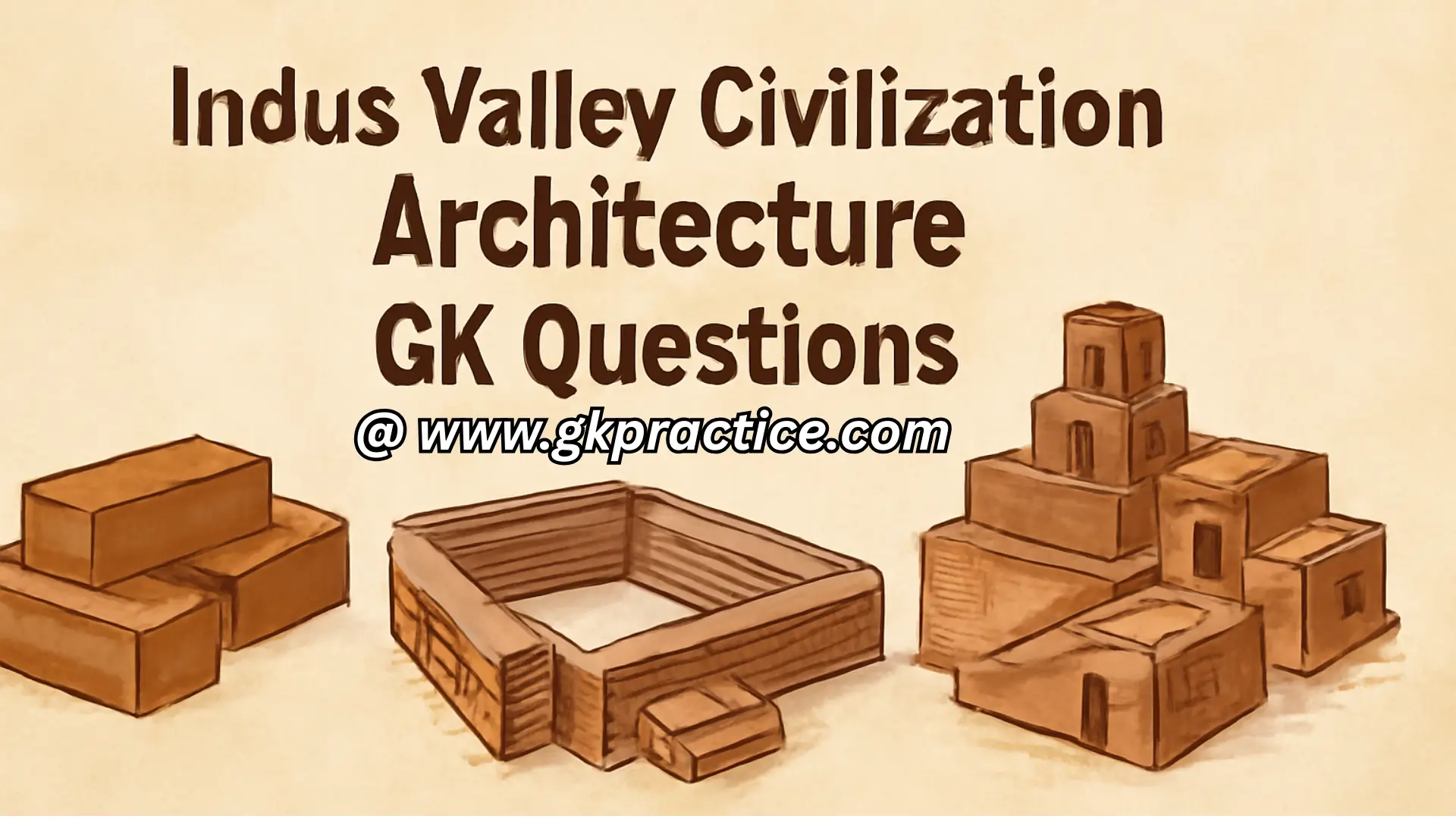Q21) Which material was predominantly used for building houses in the Indus Valley Civilization?
A) Wood
B) Mud bricks
C) Burnt bricks
D) Stone
Explanation: The Indus Valley people extensively used standardized burnt bricks for construction, providing durability and uniformity, unlike the mud bricks commonly used in Mesopotamia and Egypt.
Q22) Which city of the Indus Valley Civilization is known for the Great Bath?
A) Harappa
B) Mohenjo-daro
C) Lothal
D) Kalibangan
Explanation: The Great Bath is a prominent and sophisticated structure in Mohenjo-daro, indicating advanced engineering skills and possibly being used for ritualistic purposes.
Q23) Which element of urban planning was a unique feature in the Indus cities?
A) Narrow unpaved roads
B) Grid pattern layout
C) Large open stadiums
D) Hanging gardens
Explanation: The towns were planned in grid patterns with streets running perpendicular, showcasing advanced knowledge in urban planning and civil engineering.
Q24) The dockyard found in the Indus Valley Civilization is located at:
A) Mohenjo-daro
B) Lothal
C) Dholavira
D) Harappa
Explanation: Lothal, located in Gujarat, is famous for its dockyard, indicating maritime activities and trade links with foreign cultures.
Q25) Which feature is conspicuously absent in Indus Valley cities?
A) Advanced drainage system
B) Temples
C) Great Bath
D) Granaries
Explanation: Unlike other ancient civilizations, Indus Valley cities lack grand religious structures like temples, suggesting a secular characteristic or different spiritual practices.
Q26) Which city’s citadel possessed a sophisticated underground drainage system?
A) Harappa
B) Kalibangan
C) Dholavira
D) Mohenjo-daro
Explanation: Mohenjo-daro’s citadel had an integrated underground drainage system using baked bricks and covered drains, showing advanced sanitation.
Q27) What is the typical feature of Indus Valley house construction?
A) Dome-shaped roofs
B) Flat roofs
C) Thatched roofs
D) Slanted tiled roofs
Explanation: The houses in the Indus Valley usually had flat roofs, constructed using wooden beams and thatching over mud or brick frameworks.
Q28) Which among the following was a typical public building in the Indus cities?
A) Palace
B) Assembly Hall
C) Temple
D) Market Square
Explanation: Structures like the Great Hall or Assembly Hall at Mohenjo-daro suggest the existence of public and possibly administrative buildings.
Q29) Which city shows a three-fold division: Citadel, Middle Town, and Lower Town?
A) Mohenjo-daro
B) Harappa
C) Lothal
D) Dholavira
Explanation: Dholavira in Gujarat showcases a unique threefold town planning, which is not observed in other Harappan sites.
Q30) Granaries in Harappa are believed to have been used for:
A) Public meetings
B) Religious practices
C) Storage of grains
D) Weapons arsenal
Explanation: Granaries in Harappa were large structures likely used for storing surplus grains, reflecting centralized administration and planning.







